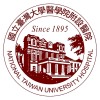Effects of RAT in Sequential Combination With CIT in Stroke Rehabilitation
Cerebrovascular Accident

About this trial
This is an interventional treatment trial for Cerebrovascular Accident focused on measuring Stroke rehabilitation, Comparative efficacy research, Combined therapy, Robot-Assisted Therapy, Constraint-Induced Therapy, Kinematic analysis
Eligibility Criteria
Inclusion Criteria:
- 6 months onset from a first-ever unilateral stroke
- An initial UL subsection of the Fugl-Meyer Assessment score of 20 to 50 indicating moderate and moderate to severe UL movement impairment
- No balance problems sufficient to compromise safety when wearing the study's constraint device
- No excessive spasticity in any of the joints of the affected UL (modified Ashworth scale ≤ 3)
- Without upper limb fracture within 3 months
- Be able to follow study instructions and perform study tasks (Mini Mental State Examination ≥ 24)
- Willing to provide written informed consent
Exclusion Criteria:
- Exhibit physician-determined major medical problems or poor physical conditions that would interfere with participation
- Excessive pain in any joint that might limit participation
Sites / Locations
- National Taiwan University HospitalRecruiting
Arms of the Study
Arm 1
Arm 2
Arm 3
Arm 4
Experimental
Experimental
Experimental
Active Comparator
RT in sequential combination with dCIT
Distributed Constraint-Induced Therapy
Robot-Assisted Therapy
Dose-matched control therapy
The participants will received 2 weeks of RT therapy and followed by 2 weeks of distributed CIT therapy. The treatment principles of RT and distributed CIT are the same with those described in the monotherapy of RT or dCIT, respectively.
The dCIT group will focus on restriction on movement of the unaffected hand by placement of the hand in a mitt for 6 hours/day and intensive training of the affected UL in functional tasks for 1.5 hours/weekday over the 4 weeks. Participants in this group will focus on the intensive training of the affected arm in functional activities with behavioral shaping.
Participants will receive 20 training sessions (1.5 hours/day, 5 days/week for 4 consecutive weeks). The ArmeoSpring will be used in this project. It is a 5 degree-of-freedom skeleton mechanism that automates arm movement in a gravity-supported and computer-enhanced environment. The design of the arm support component of the ArmeoSpring is based on Wilmington Robotic Exoskeleton, an antigravity arm support. Instrumentation of the ArmeoSpring with position sensors at each joint enables it to be used as a 3D input device for computer game play with the hemiparetic arm. A custom software package named Vu Therapy will be also used in this project. Games were designed to simulate functional arm movements to provide training in a simple virtual reality environment.
Participants will receive 20 training sessions (1.5 hours/day, 5 days/week for 4 consecutive weeks). This group will received a structured protocol using conventional occupational therapy techniques such as neuro-developmental techniques with emphasis on functional tasks and muscle strengthening. The treatment protocol will include (1) passive range of motion exercises, stretching of the affected limb, or facilitatory and inhibitory techniques for 15 to 20 minutes, (2) fine motor or dexterity training for 20 minutes, (3) arm exercises or gross motor training for 20 minutes, (4) muscle strengthening of the affected upper limb for 15 to 20 minutes, and (5) activities of daily living or functional tasks training for 15 to 20 minutes.
Outcomes
Primary Outcome Measures
Secondary Outcome Measures
Full Information
1. Study Identification
2. Study Status
3. Sponsor/Collaborators
4. Oversight
5. Study Description
6. Conditions and Keywords
7. Study Design
8. Arms, Groups, and Interventions
10. Eligibility
12. IPD Sharing Statement
Learn more about this trial
